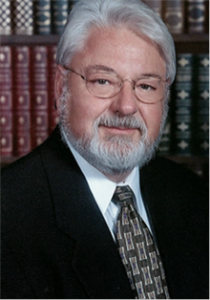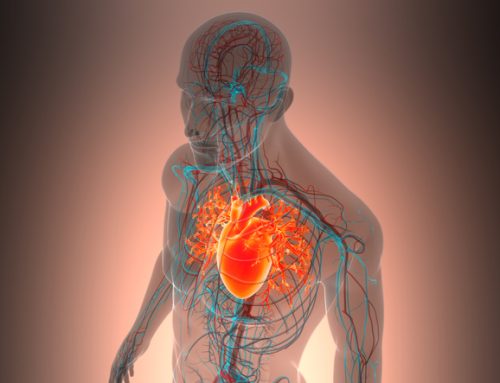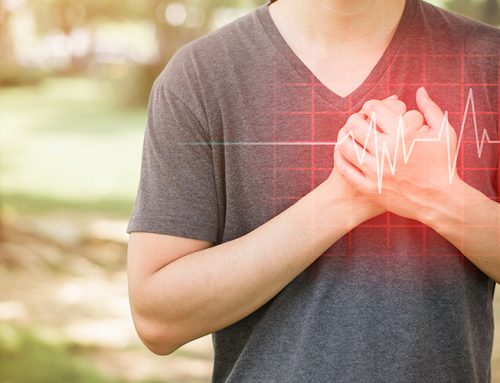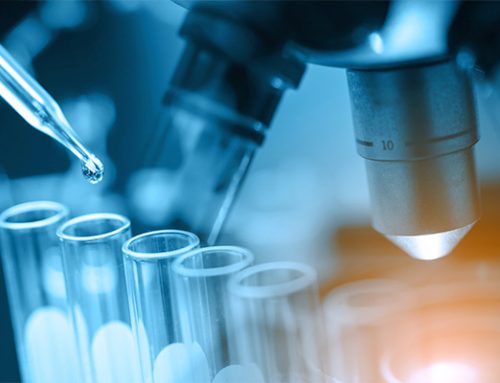
How much of the concentration of Coenzyme Q10 in muscle tissue is endogenous Coenzyme Q10 produced in the muscle tissue cells themselves, and how much is exogenous Coenzyme Q10 entering the tissue from the blood? Dr. Judy remembers that Japanese researchers were the first to determine these cellular levels in muscle tissue. They tagged the plasma Coenzyme Q10 – the Coenzyme Q10 from supplements –with an isotope. Then, afterwards, they measured the Coenzyme Q10 in muscle tissue cells. In their measurements, the tagged exogenous Coenzyme Q10 was about 48% of the total, and the endogenous Coenzyme Q10 was about 52%. Of course, in the case of older people and in cases of cellular Coenzyme Q10 deficiencies (heart failure and chronic fatigue, for example), the levels of exogenous CoQ10 can be expected to exceed the levels of endogenous Coenzyme Q10.
Okay, from solid research results, we know several things about the essential bio-nutrient Coenzyme Q10.
- our bodies produce Coenzyme Q10, which is an essential substance for our cells’ energy production and for the antioxidant protection of our cells
- once we reach our 20’s, our body’s own production of Coenzyme Q10 decreases with increasing age
- statin medications inhibit our bodies’ production of Coenzyme Q10
- we are very unlikely to get all the Coenzyme Q10 that we need from our food
- the risk of heart disease and other diseases increases with the lesser availability of Coenzyme Q10
- we need a daily Coenzyme Q10 supplement.
Coenzyme Q10 levels in tissue cell and in plasma
Basic fact: Plasma Coenzyme Q10 levels will always exceed tissue cell Coenzyme Q10 levels except, possibly, in some very well-conditioned athletes, e.g. soccer players and cross-country skiers and cyclists. In some superior athletes, the tissue cell Coenzyme Q10 levels and the plasma Coenzyme Q10 levels may come close to being equal.
How does Coenzyme Q10 get from the blood to the cells?
Coenzyme Q10 molecules move from the blood into the tissue cells by the process of diffusion. If plasma Coenzyme Q10 concentrations were lower than the tissue cell Coenzyme Q10 concentrations, then the diffusion of Coenzyme Q10 from the blood into the tissue cells could not take place. There would need to be some sort of active transport of Coenzyme Q10 into the tissue cells, and we know of no active transport of Coenzyme Q10 into the tissue cells [Judy 2016].
Dr. William Judy, SIBR Research, hypothesizes that some people, perhaps people on special diets, vegans, for example, or poor people on the Indian sub-continent, might conceivably have plasma Coenzyme Q10 levels lower (< 0.25 micrograms per milliliter) than their heart muscle tissue or skeletal muscle tissue levels are, especially if they are young and still producing relatively higher Coenzyme Q10 on their own.
Tissue cell Coenzyme Q10 as a % of plasma Coenzyme Q10
Dr. Judy has examined the data from four different studies:
- Normal healthy adults
- Athletes
- Heart failure patients
- Chronic fatigue patients
| Kalén, Normal | 20 yrs old
42% |
40 yrs old
44% |
80 yrs old
41% |
||
| Karlsson, Athletes | Control
83% |
Moderately trained
78% |
Highly Trained
71% |
||
| Mortensen,
Heart Failure |
Control
55% |
Class I
55% CoQ10 Treated 34% |
Class II
52% CoQ10 Treated 33% |
Class III
50% CoQ10 Treated 31% |
Class IV
44% CoQ10 Treated 29% |
| Judy, Chronic Fatigue | Control Group
52% |
CF Control Group 54% |
CF 180 days CoQ10 13% |
CF 180 days Placebo 39% |
Normal healthy adults and Coenzyme Q10
In the study of normal healthy adults, the concentration of Coenzyme Q10 in muscle tissue cells was at a level that was 42% of the plasma Coenzyme Q10 levels in 20-year-olds, and the Coenzyme Q10 concentration stayed at 44% and 41%, respectively, in 40-year-olds and 80-year-olds [Kalén].
Remember: we said that the concentrations of Coenzyme Q10 in muscle tissue cells will necessarily be lower than the plasma or serum Coenzyme Q10 levels. Otherwise, there will not be any Coenzyme Q10 molecules diffusing into the tissue.
Well-conditioned athletes and Coenzyme Q10
In the study of well-conditioned athletes, the concentration Coenzyme Q10 in muscle tissue cells was at a level that was 83% of the plasma Coenzyme Q10 levels in a control group of athletes, and the Coenzyme Q10 concentration stayed at 78% and 71%, respectively, in groups of moderately conditioned and highly conditioned athletes [Karlsson].
Note, please, that the concentration of Coenzyme Q10 in muscle tissue cells is a much greater percentage of the plasma Coenzyme Q10 levels than was the case in non-athletes. Athletes have higher numbers of functional mitochondria in their cells.
Explanation of high Coenzyme Q10 in athletes’ muscles
What is the probable explanation for athletes’ having Coenzyme Q10 in their muscle tissue cells at much higher percentages of their plasma Coenzyme Q10 levels? One hypothesis is that well-conditioned athletes have, as a consequence of their training, more mitochondria (the so-called “energy factories” in the cells) in their muscle cells than normal people do, and, furthermore, well-conditioned athletes may have mitochondria that are capable of producing more energy than “normal” mitochondria [Nielsen].
Dr. Judy explains that the ratio of muscle cell Coenzyme Q10 to plasma Coenzyme Q10 in athletes shows the importance of exercise on both Coenzyme Q10 bio-synthesis and mitochondrial development. The influence of exercise on Coenzyme Q10 synthesis and on mitochondrial development is one of the reasons that cardiologists want heart attack patients up and walking the halls as soon as possible.
Heart failure patients and Coenzyme Q10
In the study of heart failure patients, the concentration of Coenzyme Q10 in muscle tissue cells was at a level that was 55% of the plasma Coenzyme Q10 levels in a control group and dropped from 55% down to 52%, 50%, and 44%, respectively, in control group patients diagnosed at NYHA classes I, II, III, and IV (NYHA IV being the most severe level) [Mortensen].
Chronic heart failure patients in the active treatment group received Coenzyme Q10 supplements and showed muscle tissue cell Coenzyme Q10 levels that were 34%, 33%, 31%, and 29% (again, NYHA class I through IV) of the plasma Coenzyme Q10 levels. This reduction in percentage is explained by the correspondingly greater increase in plasma Coenzyme Q10 concentrations in the supplemented patients.
Of course, the thing to remember here is that the unsupplemented heart failure patients have demonstrably lower volumes of Coenzyme Q10 in their blood. Consequently, Coenzyme Q10 concentrations in the muscle tissue cells of heart failure patients that are 55% of plasma Coenzyme Q10 levels may well be less Coenzyme Q10, by volume, than the volume of Coenzyme Q10 is in the tissue cells of normal healthy adults. The heart muscle cell levels of Coenzyme Q10 in Class IV chronic heart failure drops to 0.22 micrograms per milliliter compared to 0.44 micrograms per milliliter in the non-failing heart.
Supplementation with Coenzyme Q10 can take some time to build up the reserves in heart failure patients. In the heart muscle tissue, many of the mitochondria will have become inactive and will have colonized near the muscle cell membrane [Judy 2016]. It will take some time — perhaps six months or more — of exercise and supplementation with Coenzyme Q10 to see beneficial health effects. We do know from the results of randomized controlled trials that Coenzyme Q10 supplementation is associated with increased plasma Coenzyme Q10 levels and with significantly improved symptoms and survival [Mortensen 2014].
Chronic fatigue patients and Coenzyme Q10
In the study of chronic fatigue patients, the concentration of Coenzyme Q10 in muscle tissue cells was at a level that was 52-54% of the plasma Coenzyme Q10 levels in a control group. The Coenzyme Q10 concentration in muscle tissue cells increased from 0.25 micrograms per milliliter to 0.39 and 0.47 micrograms per milliliter after 100 and 300 milligrams/day supplementation with Coenzyme Q10, respectively. The Coenzyme Q10 concentration in muscle tissue cells dropped, after 180 days, to a level of 13% of the plasma Coenzyme Q10 level in patients who were treated with Coenzyme Q10 supplements compared to 39% in patients treated with placebo supplements.
Please note: Supplementation increased plasma Coenzyme Q10 levels significantly. Consequently, the muscle tissue cell concentrations, as a percentage of plasma Coenzyme Q10 levels, were lower.
Exercise and mitochondria and Coenzyme Q10 levels?
According to Dr. Judy, tissue cell Coenzyme Q10 levels cannot increase much above a “normal” concentration level [Judy 2016]. The way to increase tissue cell Coenzyme Q10 volume is to increase the number of mitochondria in the cells. There is no known hormonal stimulation that increases the number of mitochondria in the cells. Getting older definitely does not increase the number of mitochondria [Judy 2016]. Exercise is the only known stimulant to the development of more mitochondria [Saramiento 2016].
The mitochondria in both heart failure and chronic fatigue patients atrophy (shrink) and colonize adjacent to the cell membrane and are inactive (Source: Dr. Svend Aage Mortensen, Ph.D. dissertation). It takes time to regenerate these mitochondria so that they move back into the cellular muscle contractile elements and become active. Exercise is most probable the initiator of this process.
Coenzyme Q10 that does not diffuse into the tissue cells?
What happens to the Coenzyme Q10 that does not diffuse into the tissue cells? Eventually, it will be cleared from the blood by the liver. It will then be reabsorbed or lost through fecal elimination.
Conclusions about Coenzyme Q10
People in the following categories definitely need to exercise to the greatest extent possible and need to take a daily Coenzyme Q10 supplement:
- Heart disease patients
- Patients taking statin medications
- Patients with type-2 diabetes
- Patients with high blood pressure
- Patients with low energy syndrome disorders
- Normal healthy adults entering their 30s and 40s and beyond
- Athletes doing strenuous workouts
The two things, exercise and daily Coenzyme Q10 supplements, go hand in hand. But, remember please, that not all Coenzyme Q10 products have the same effectiveness. There are effective and non-effective Coenzyme Q10 products on the market in the USA.
Sources:
Kalén, A, Appelkvist, E.L. & Dallner, G. (1989). Age-related changes in the lipid compositions of rat and human tissues. Lipids, 24(7):579–584.
Karlsson, J. (1987). Heart and skeletal muscle ubiquinone or CoQ10 as a protective agent against radical formation in man. In: G. Benzi (ed.). Advances in Myochemistry. London: John Libbey, 305–318.
Judy, W.V. , Folkers, K., and Rosenfeldt, F. (In press). Management of chronic fatique syndrome with CoQ10.
Mortensen, S. A., Valhanavikit, S., Baandrup, U., & Folkers, K. (1985). Long term Coenzyme Q10 therapy: A major advance in the management of resistant myocardial failure. Drug Exp. Clin. Res., 11:581-593.
Nielsen, J., Gejl, K. D., Hey-Mogensen, M., Holmberg, H., Suetta, C., Krustrup, P., & … Ørtenblad, N. (2016). Plasticity in mitochondrial cristae density allows metabolic capacity modulation in human skeletal muscle. The Journal Of Physiology, doi:10.1113/JP273040.
Sarmiento, A., Diaz-Castro, J., Pulido-Moran, M., Kajarabille, N., Guisado, R., & Ochoa, J. J. (2016). Coenzyme Q10 Supplementation and Exercise in Healthy Humans: A Systematic Review. Current Drug Metabolism, 17(4), 345-358.









Leave A Comment